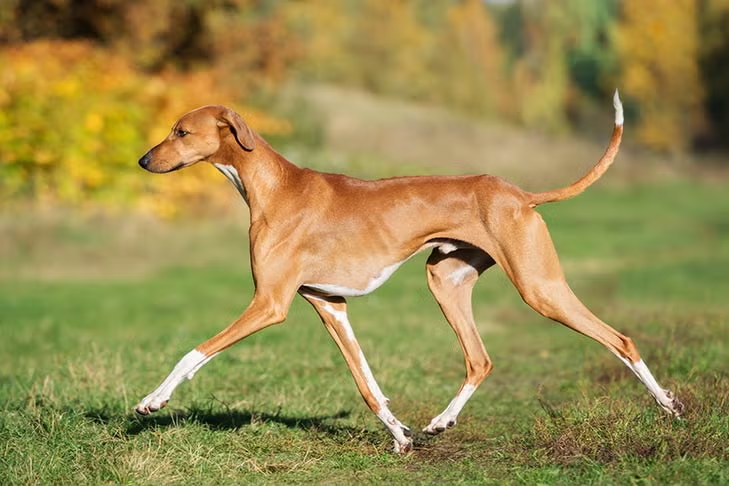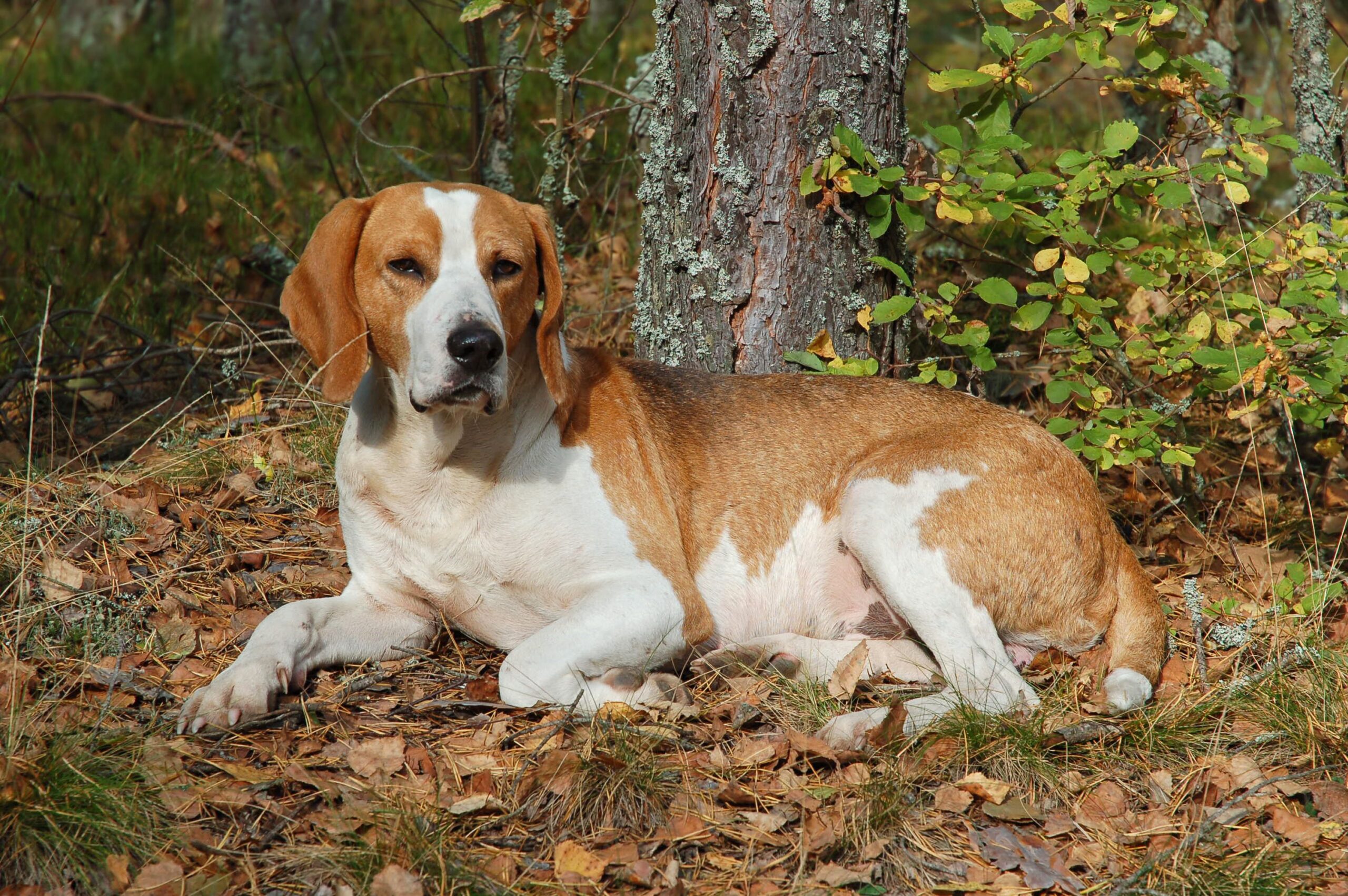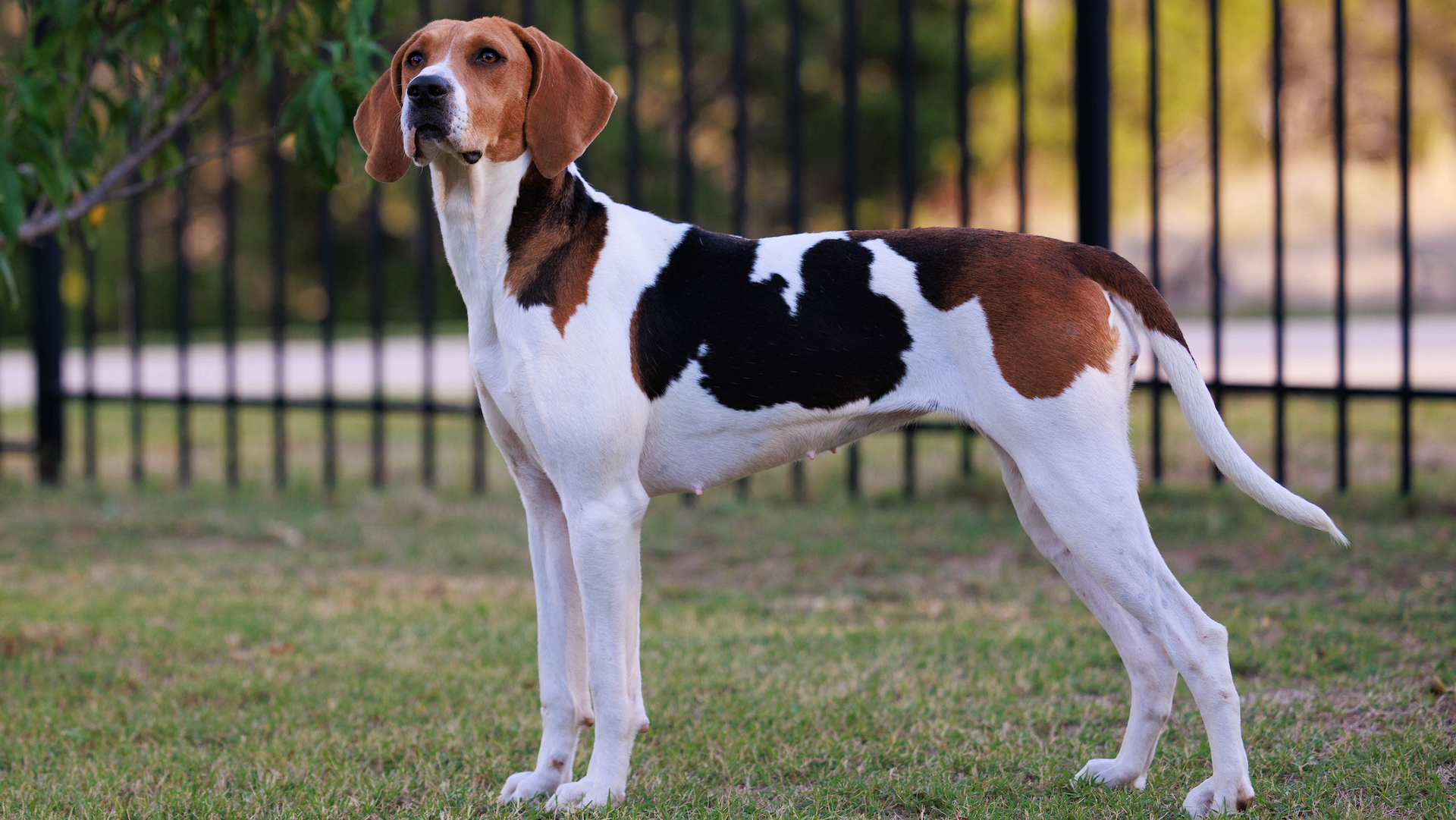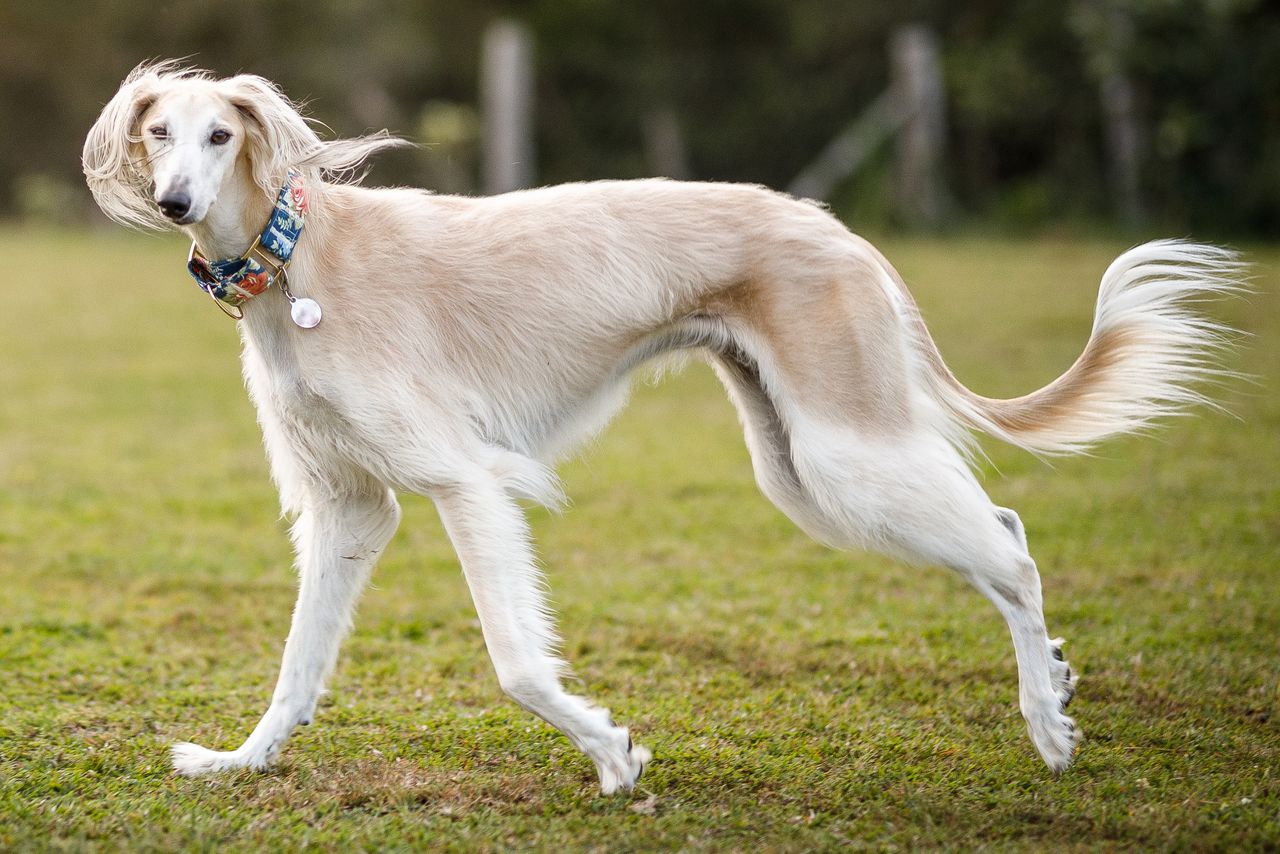My Unexpected Introduction to the Majestic Azawakh
The first time I encountered an Azawakh was at a specialty dog show in Colorado. I was wandering between exhibition rings when I spotted what looked like a living sculpture – a dog of such extreme elegance and refinement that it barely seemed real. With its deeply tucked waist, prominent hipbones, and impossibly long legs, my first thought was concern that this dog was severely underweight. But as I watched it move with breathtaking grace around the ring, I realized I was witnessing something extraordinary – a breed developed over thousands of years for life in one of the harshest environments on Earth.
The owner noticed my fascination and invited me to meet her Azawakh after the judging. “They look delicate, but they’re incredibly tough,” she explained as her dog regarded me with alert, intelligent eyes. “They’ve been the guardians and hunting companions of nomadic tribes in the Sahara for millennia.” As I gently stroked the dog’s silky coat and felt the surprising firmness of muscle beneath, I was completely captivated by this rare breed that combined extreme athleticism with an almost regal dignity.
If you’ve never heard of Azawakhs or have only seen them in photos, you’re definitely not alone. One of the newest breeds recognized by the American Kennel Club (only officially added in 2019) and one of the rarest dogs in America, the Azawakh remains a well-kept secret in the dog world. Yet with their striking appearance, fascinating history, and unique temperament, these elegant sighthounds deserve far more recognition than they typically receive.
Whether you’re considering adding one of these extraordinary hounds to your family, fascinated by their ancient heritage, or simply curious about distinctive dog breeds, I’ve put together the ultimate guide to Azawakhs. From their development in the Sahel region of West Africa to what they’re actually like as companions (spoiler alert: they’re not for everyone!), we’ll cover everything you need to know about these remarkable desert hounds. So grab your favorite beverage, get comfortable, and let’s explore the wonderful world of Azawakhs!
Ancient African Heritage: The Desert-Adapted Sighthound
To truly understand what makes Azawakhs so special, we need to appreciate their extraordinary heritage, which has shaped every aspect of these remarkable animals – from their distinctive appearance to their unique temperament.
Origins in the Sahel
The Azawakh’s history begins thousands of years ago in the Sahel region of West Africa – specifically in the Azawakh Valley, which spans parts of Mali, Niger, and Burkina Faso. In this harsh, semi-arid environment at the edge of the Sahara Desert, the nomadic Tuareg, Bella, and Hausa peoples developed these dogs as both hunting companions and camp guardians.
Archaeological evidence, including rock paintings dating back 8,000-10,000 years, depicts sighthound-type dogs that bear remarkable resemblance to modern Azawakhs. This makes the breed one of the most ancient dog types still in existence, with a lineage largely unchanged by modern breeding practices until their relatively recent introduction to Europe and America.
In their homeland, Azawakhs were never bred purely for appearance but rather for functional traits that allowed them to thrive in an extreme environment – speed, endurance, intelligence, and the ability to survive on minimal resources. They hunted gazelle, hare, and wild boar across the sparse terrain, often in temperatures exceeding 120°F (49°C), and protected their human families’ camps from intruders and predators.
Cultural Significance
Far from being mere hunting tools, Azawakhs held (and still hold) deep cultural significance for the Tuareg and other nomadic peoples of the region. These dogs were considered full members of the family, often sleeping in the tents with their people and receiving the same level of care as the children. They were adorned with protective amulets and featured prominently in cultural traditions and stories.
The relationship between the nomadic peoples and their Azawakhs represents one of the most ancient and enduring partnerships between humans and dogs. The breed’s legendary loyalty stems from this centuries-old bond, where mutual survival in harsh conditions depended on close cooperation between human and canine.
One unique aspect of Azawakhs in their homeland is that they weren’t traditionally bred in the Western sense of carefully arranged matings. Instead, preferred females would be isolated during their fertile periods and allowed to mate only with selected males. Puppies born with desirable traits would be kept and integrated into the pack, while those lacking desired characteristics might be culled or given away.
Journey to the Western World
The Azawakh remained largely unknown outside West Africa until the 1970s, when French diplomats and military personnel stationed in the region began importing them to Europe. The first documented Azawakhs arrived in the United States in the 1980s, but they remained extremely rare.
The breed was officially recognized by the Fédération Cynologique Internationale (FCI) in 1981 and by the United Kennel Club (UKC) in 1993, but had to wait until January 2019 for full recognition by the American Kennel Club (AKC) – making it one of the AKC’s newest official breeds despite being one of the world’s oldest dog types.
Throughout their journey to Western recognition, Azawakhs have maintained their distinctive characteristics thanks to dedicated enthusiasts who understood the importance of preserving the breed’s unique heritage rather than molding it to match Western aesthetic preferences. This preservation effort continues today, with many breeders working to maintain the genetic diversity and desert-adapted traits that make Azawakhs so special.
The Azawakh Look: Elegance Refined by Function
The Azawakh’s appearance is truly distinctive – an elegant, minimalist design created not by human aesthetic preferences but by thousands of years of natural selection and purposeful breeding for survival in one of Earth’s most challenging environments.
The Desert-Adapted Form
Azawakhs are tall, lean sighthounds with an appearance that might seem almost concerningly thin to those accustomed to more heavily-built dog breeds. Males typically stand 25-29 inches at the shoulder and weigh 44-55 pounds, while females are 23-27 inches and 33-44 pounds. Despite their slender build, they possess remarkable strength and athleticism.
Their most striking physical characteristics include:
- An extremely tucked abdomen and visible hip bones
- Long, slender legs with pronounced, lean musculature
- A deep chest that narrows dramatically at the waist
- A long, elegant neck flowing into refined shoulders
- A narrow, wedge-shaped head with almond-shaped eyes
- Large, expressive ears that can stand upright when alert
- A low-set tail that tapers to a point
This extreme build represents perfect adaptation to the scorching heat of the Sahel region. The Azawakh’s enormous surface-area-to-volume ratio allows for efficient heat dissipation, while their minimal body fat prevents overheating. Even their prominent veins serve a purpose – helping to cool blood as it circulates near the skin’s surface.
The Azawakh’s movement is perhaps their most breathtaking feature – a light, effortless gait with tremendous reach and drive that showcases their history as endurance hunters. When running at full speed, they can reach 40 miles per hour in short bursts, matching or exceeding the speed of many prey animals in their native habitat.
Coat Colors and Variations
The Azawakh’s short, fine coat comes in a wide variety of colors and patterns, reflecting the breed’s ancient origins and minimal human intervention in their development. Colors include:
- Various shades of fawn (from light cream to deep red)
- Brindle (dark stripes on a lighter base color)
- Parti-color (large patches of different colors)
- Black
- Blue (a diluted black appearing as gray)
- Various combinations with white markings
While Western breed standards have traditionally favored certain colors, in the Azawakh’s homeland, color has historically been of little importance compared to working ability, health, and temperament. Many Azawakh enthusiasts embrace this diversity of color and pattern as part of the breed’s authentic heritage.
The coat itself is extremely fine and requires minimal grooming – a weekly once-over with a soft brush or rubber curry is typically sufficient. Azawakhs are naturally clean dogs with minimal “dog odor,” and many owners report they rarely need bathing unless they get into something particularly messy.
Personality & Temperament: The Complex Soul of the Desert
Beyond their striking appearance, what truly sets Azawakhs apart is their unique temperament – a fascinating blend of traits shaped by thousands of years as both hunters and guardians in a harsh environment where survival depended on close bonds with their human family.
The Loyal Protector
Perhaps the defining characteristic of Azawakh temperament is their extraordinary loyalty to their chosen people. These are not dogs that form casual friendships with every human they meet. Instead, they develop intense, deep bonds with their family members while maintaining a reserved, sometimes aloof attitude toward strangers.
This loyalty manifests as a protective instinct that makes Azawakhs excellent watchdogs. They’re naturally alert and territorial, quick to sound the alarm at unusual sights or sounds. While not aggressive without cause, they will assertively defend their people and territory if they perceive a threat.
Within their family circle, most Azawakhs are affectionate and deeply attached, often forming particularly close bonds with one special person. They typically want to be near their people and may follow favorite family members from room to room. Many enjoy physical contact and will lean against their people or rest their heads in laps, though they rarely demand attention in an intrusive way.
This intense loyalty means Azawakhs generally don’t do well when left alone for extended periods. They thrive in households where someone is home most of the time or where they have canine companions to keep them company.
The Independent Thinker
Alongside their loyalty, Azawakhs possess a distinct independence that comes from their heritage as hunters who needed to make quick decisions without constant human guidance. This is not a dog bred to look constantly to humans for direction but rather one developed to think and act autonomously when necessary.
This independent nature means Azawakhs approach training differently than many more biddable breeds. They’re highly intelligent and capable of learning quickly, but they tend to question why they should perform tasks and may choose not to comply if they see no benefit. Training approaches based on mutual respect, clear communication, and positive reinforcement are most successful with these sensitive, thinking dogs.
Many Azawakh owners describe their dogs as having an almost cat-like quality to their independence – they enjoy human company but engage with people on their own terms rather than with the eager-to-please attitude seen in breeds like Labrador Retrievers or Golden Retrievers.
Sensitivity and Socialization
Another key aspect of Azawakh temperament is their remarkable sensitivity. These dogs are finely attuned to the emotions and energy of their people and environment. They typically respond poorly to harsh treatment, loud environments, or conflict, often withdrawing or becoming anxious in such situations.
This sensitivity makes early, positive socialization absolutely essential for Azawakhs. Puppies need careful exposure to a wide variety of people, animals, environments, and experiences to develop into confident, well-adjusted adults. Without proper socialization, their natural reserve can develop into fearfulness or inappropriate suspicion.
With appropriate socialization, most Azawakhs develop a balanced approach to the world – watchful and slightly reserved with strangers but not fearful or aggressive, and comfortable in various environments while maintaining their natural dignity and independence.
Living With an Azawakh: Practical Considerations
Beyond their history and personality, what’s it actually like to share your home with an Azawakh? There are some unique considerations that potential owners should understand before bringing one of these special dogs home.
Exercise and Space Needs
Despite their history as endurance hunters, adult Azawakhs often have surprisingly moderate exercise needs compared to some high-energy breeds. Most require 30-60 minutes of quality exercise daily, ideally including some opportunity to run freely in a safely enclosed area.
Their exercise pattern typically follows their desert heritage – intense bursts of activity followed by long periods of rest and relaxation. Many Azawakh owners describe their dogs as “energy conservers” who can switch from complete stillness to explosive speed in an instant, then return to calm relaxation afterward.
Activities that many Azawakhs enjoy include:
- Running in securely fenced areas
- Lure coursing or racing events designed for sighthounds
- Hiking (though recall reliability can be an issue)
- Play sessions with compatible dogs
- Agility or other dog sports that combine physical and mental challenge
The emphasis on “securely fenced” cannot be overstated. Like most sighthounds, Azawakhs have a strong prey drive and will pursue small animals with single-minded focus, oblivious to traffic, terrain, or calls to return. For safety, they should only be allowed off-leash in fully enclosed areas, regardless of how well-trained they seem.
While Azawakhs need room to stretch their legs, they’re surprisingly adaptable to various living situations, including apartments, provided their exercise needs are consistently met. Many are quiet and calm indoors after sufficient exercise, content to lounge on comfortable furniture or beds.
Temperature Sensitivity
One of the most important practical considerations for Azawakh owners is their sensitivity to cold temperatures. These dogs evolved for extreme heat, not cold, and their minimal body fat and fine coats provide little insulation against chilly weather.
Most Azawakhs need protective clothing for comfortable walks in cold or wet conditions. Many owners accumulate an impressive collection of dog coats, sweaters, and even pajamas to keep their Azawakhs comfortable year-round in cooler climates.
Inside the home, Azawakhs appreciate warm sleeping spots and may seek out sunny patches, heating vents, or warm bodies to cuddle with. Raised beds that keep them off cold floors and plenty of blankets for burrowing are typically much appreciated.
Conversely, most Azawakhs handle heat extremely well compared to many other breeds. Their natural cooling mechanisms allow them to remain active and comfortable in temperatures that would be dangerous for many dogs, though common-sense precautions like access to shade and fresh water are always important.
Health Considerations
Azawakhs are generally healthy dogs with a typical lifespan of 12-15 years. As a landrace breed – one developed primarily through natural selection rather than intense human-directed breeding – they’ve avoided many of the genetic health problems that plague some more heavily manipulated breeds.
However, there are some health issues that appear in the breed with some frequency:
- Autoimmune disorders (including thyroiditis and Addison’s disease)
- Epilepsy
- Cardiac issues
- Wobbler syndrome (cervical vertebral instability)
- Various seizure disorders
Working with a reputable breeder who conducts appropriate health testing can reduce the risk of these conditions. Because the Azawakh population outside Africa remains relatively small, maintaining genetic diversity is an important concern for preserving the breed’s health.
Due to their extremely low body fat, Azawakhs may have unusual reactions to certain medications, particularly anesthetics. Owners should ensure their veterinarians are experienced with sighthounds or willing to research appropriate protocols for these unique dogs.
Is an Azawakh Right for You? Honest Assessment
After learning all about these extraordinary desert hounds, you might be wondering if an Azawakh would fit well in your lifestyle. Let’s take an honest look at who should (and perhaps shouldn’t) consider this breed.
You Might Be a Great Azawakh Owner If…
An Azawakh might be right for you if:
- You appreciate an independent, intelligent dog that forms deep but somewhat reserved bonds
- You’re experienced with dogs or willing to work with trainers who understand sighthound psychology
- You can provide daily exercise including some opportunities for running in secure areas
- You’re home relatively often or can bring your dog with you to many activities
- You enjoy a clean, generally odor-free dog with minimal grooming needs
- You can provide adequate protection from cold weather
- You appreciate a watchful, alert dog but don’t need aggressive guarding
- You find joy in preserving a rare, ancient breed with unique characteristics
- You’re patient with training and accept that perfect obedience may not be achievable
Azawakhs can adapt to various household compositions, including families with well-behaved older children who understand how to interact respectfully with dogs. They often form strong bonds with children they’re raised with, becoming gentle and protective companions.
A Different Breed Might Be Better If…
An Azawakh might not be the best choice if:
- You want an easily trainable dog that eagerly obeys commands
- You’re away from home for extended periods regularly
- You have very young or rough children
- You have small pets like cats, rabbits, or other small animals
- You live in a very cold climate without means to keep the dog warm
- You want a dog that’s friendly and outgoing with everyone it meets
- You can’t provide secure containment for a fast, prey-driven dog
- You prefer a dog that’s widely recognized and easier to find information about
- You’re a first-time dog owner looking for an “easy” breed
Finding Your Azawakh
If you decide an Azawakh is right for you, patience will be necessary during your search. As one of the rarest breeds in America, with only a handful of litters born each year, finding an Azawakh puppy or adult can be challenging.
The American Azawakh Association is an excellent starting point, as they can provide breeder referrals and education about the breed. Expect a thorough interview process – responsible breeders want to ensure their puppies go to homes that understand and are prepared for the unique characteristics of the breed.
Be prepared for a waiting period of months or even years, as litters are infrequent and usually small. Puppies from health-tested parents typically cost between $2,000-$3,500, reflecting their rarity and the care involved in responsible breeding.
Rescue options exist but are extremely limited due to the breed’s rarity. However, occasionally adult Azawakhs need rehoming due to owner circumstances rather than behavioral issues, and breed-specific rescue networks can help connect these dogs with appropriate new homes.
Conclusion: The Timeless Appeal of the Desert Sighthound
There’s something truly special about Azawakhs. Perhaps it’s their ancient heritage – the living connection to one of humanity’s oldest partnerships with dogs. Perhaps it’s their extraordinary physical form – the elegant, minimalist design shaped by millennia of natural selection for survival in extreme conditions. Or perhaps it’s their unique character – the perfect balance of fierce loyalty and independent dignity that creates a relationship unlike any other in the dog world.
Living with an Azawakh means embracing certain compromises – the need for secure containment, protection from cold, acceptance of their reserved nature with strangers, and respect for their independent thinking. But for those who connect with their special spirit, these accommodations are minor compared to the joy of sharing life with such an extraordinary companion.
Azawakhs aren’t for everyone, and their rarity helps ensure they generally go to homes that truly appreciate their unique qualities. But for those who connect with their desert-forged character, these elegant sighthounds offer a relationship that’s as challenging as it is rewarding – a connection to thousands of years of history wrapped in a package that combines ancient wisdom with athletic grace.
As one experienced Azawakh owner beautifully expressed it, “They’re not just dogs; they’re living heritage. Every day with my Azawakh feels like a privilege – a chance to experience something truly ancient and yet perfectly adapted to forming deep bonds with the right human partners.” For the right person with the right expectations, truer words were never spoken.




